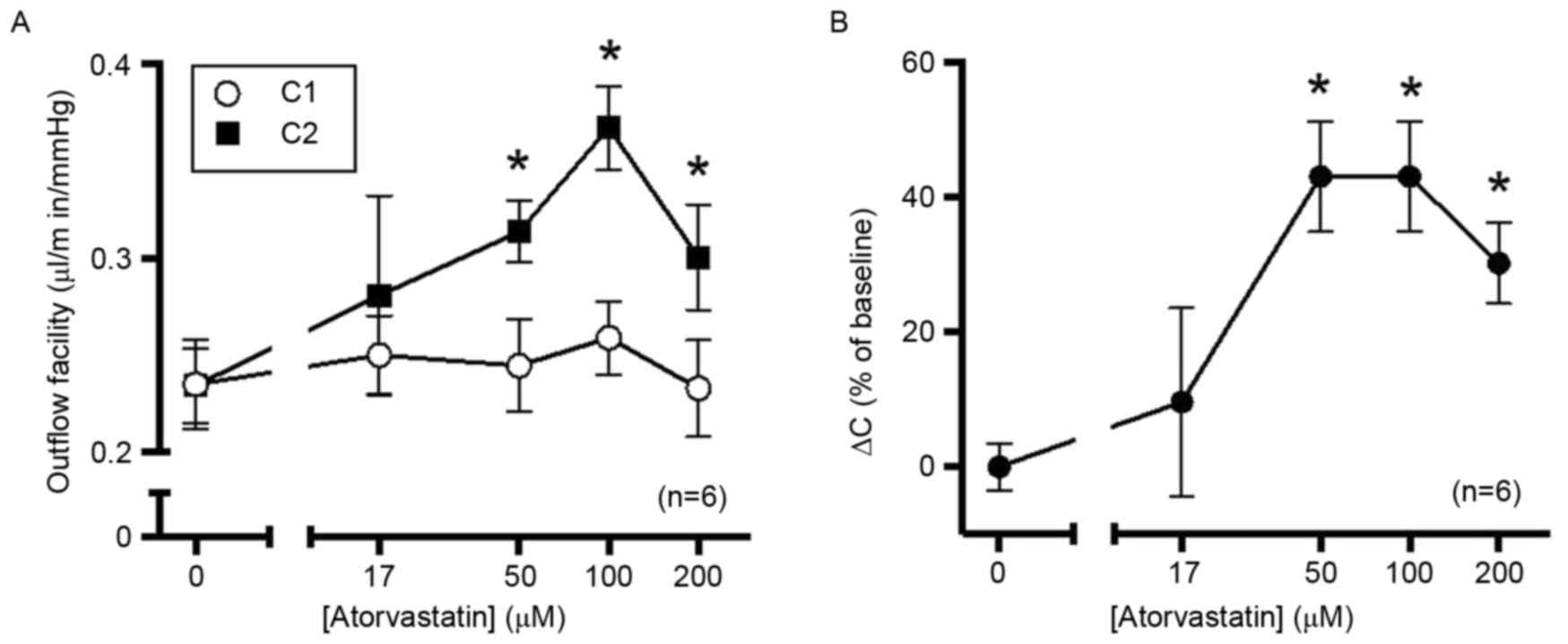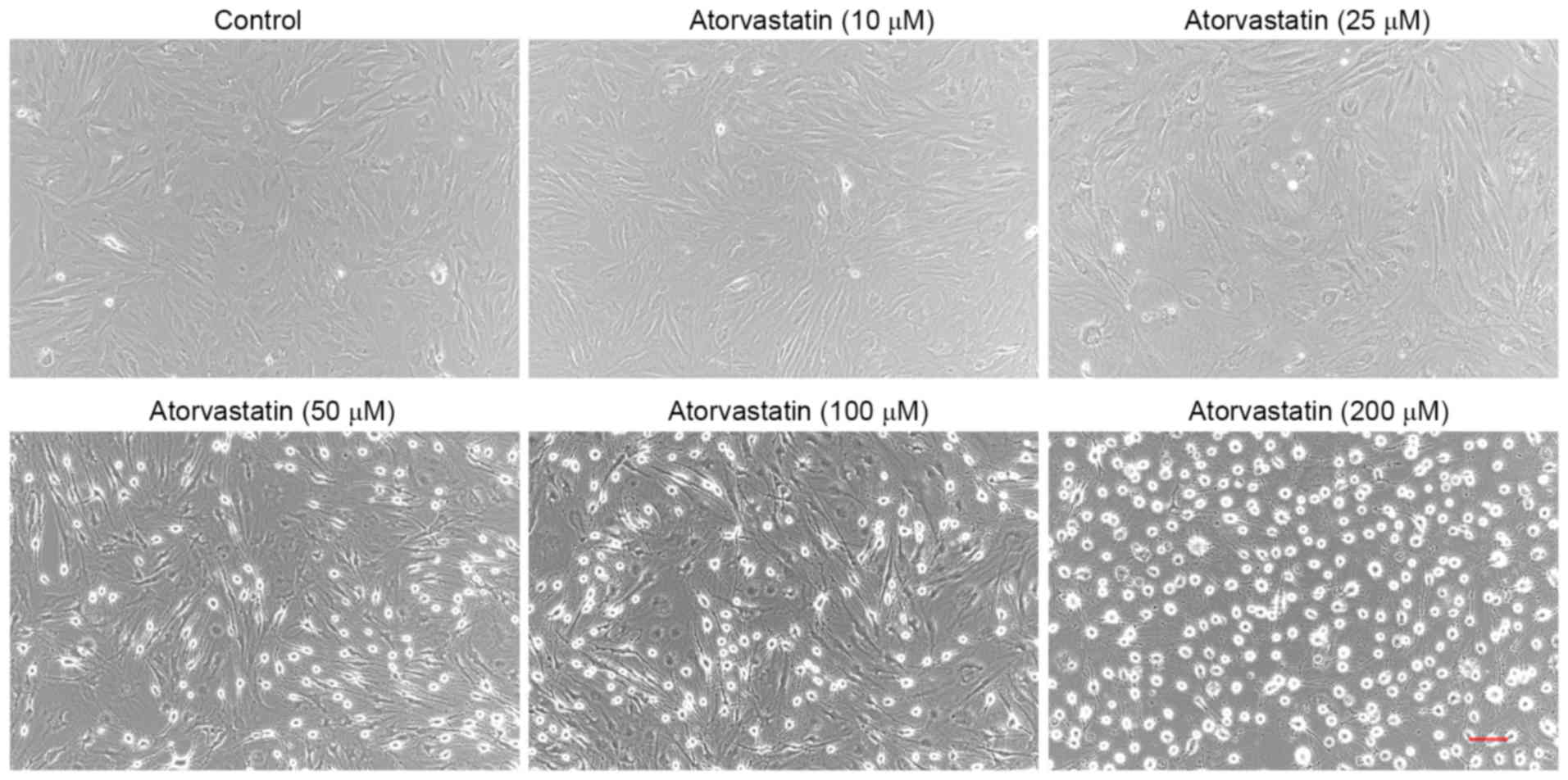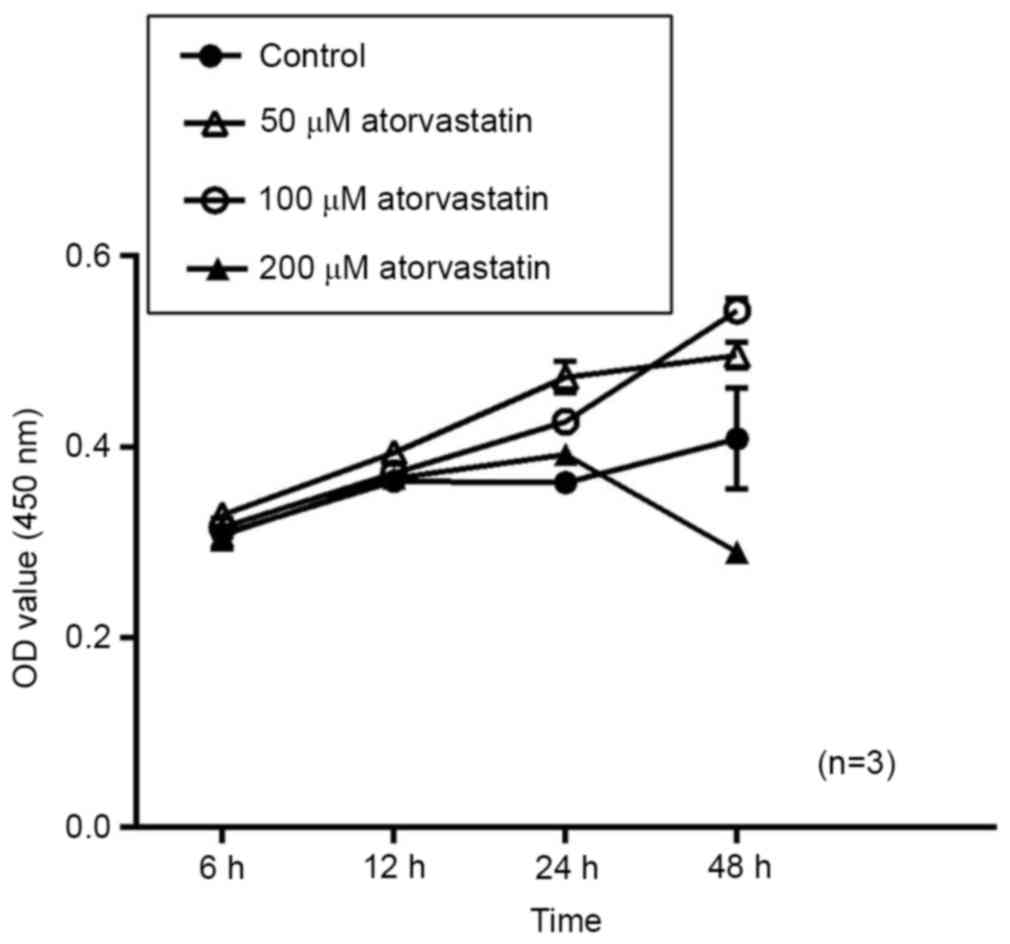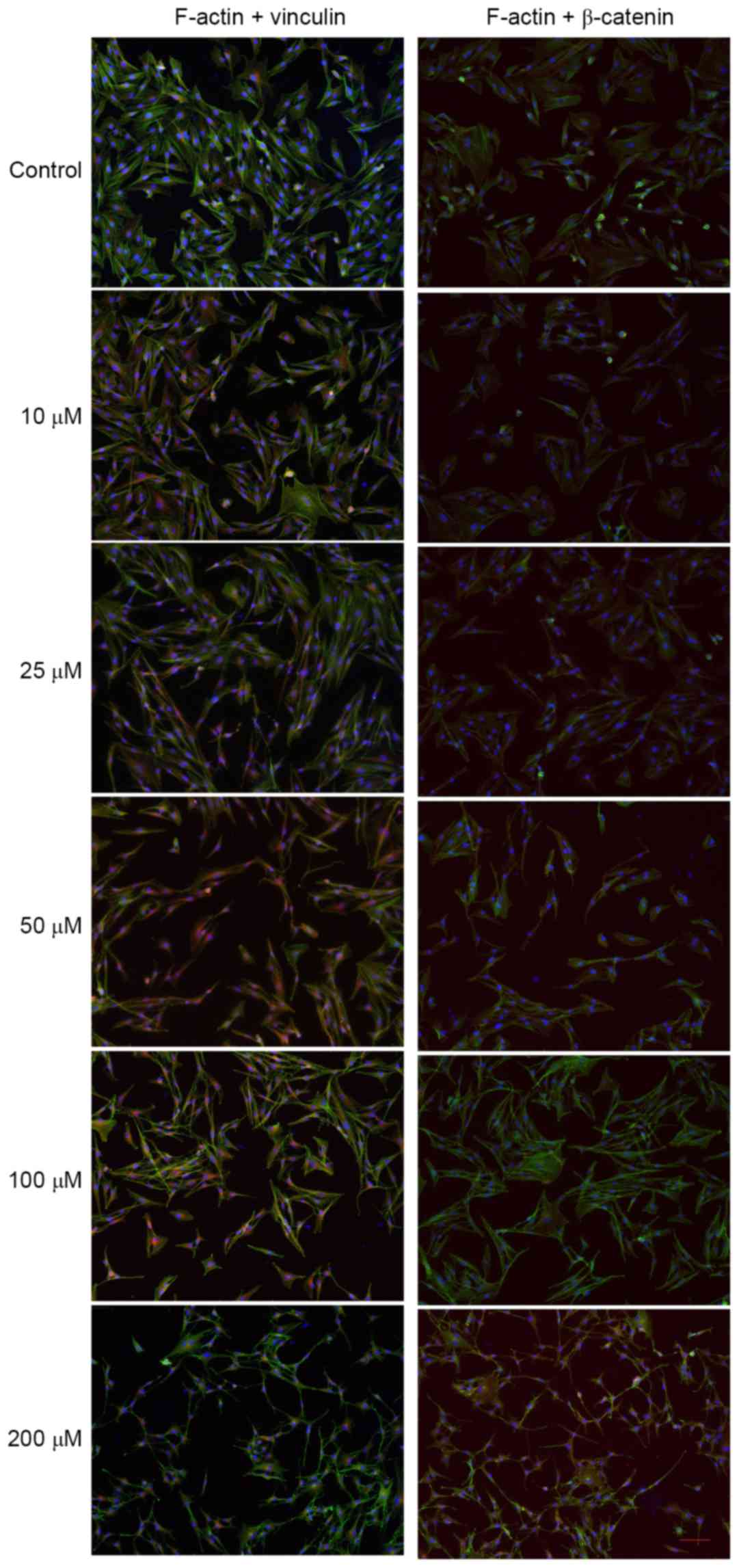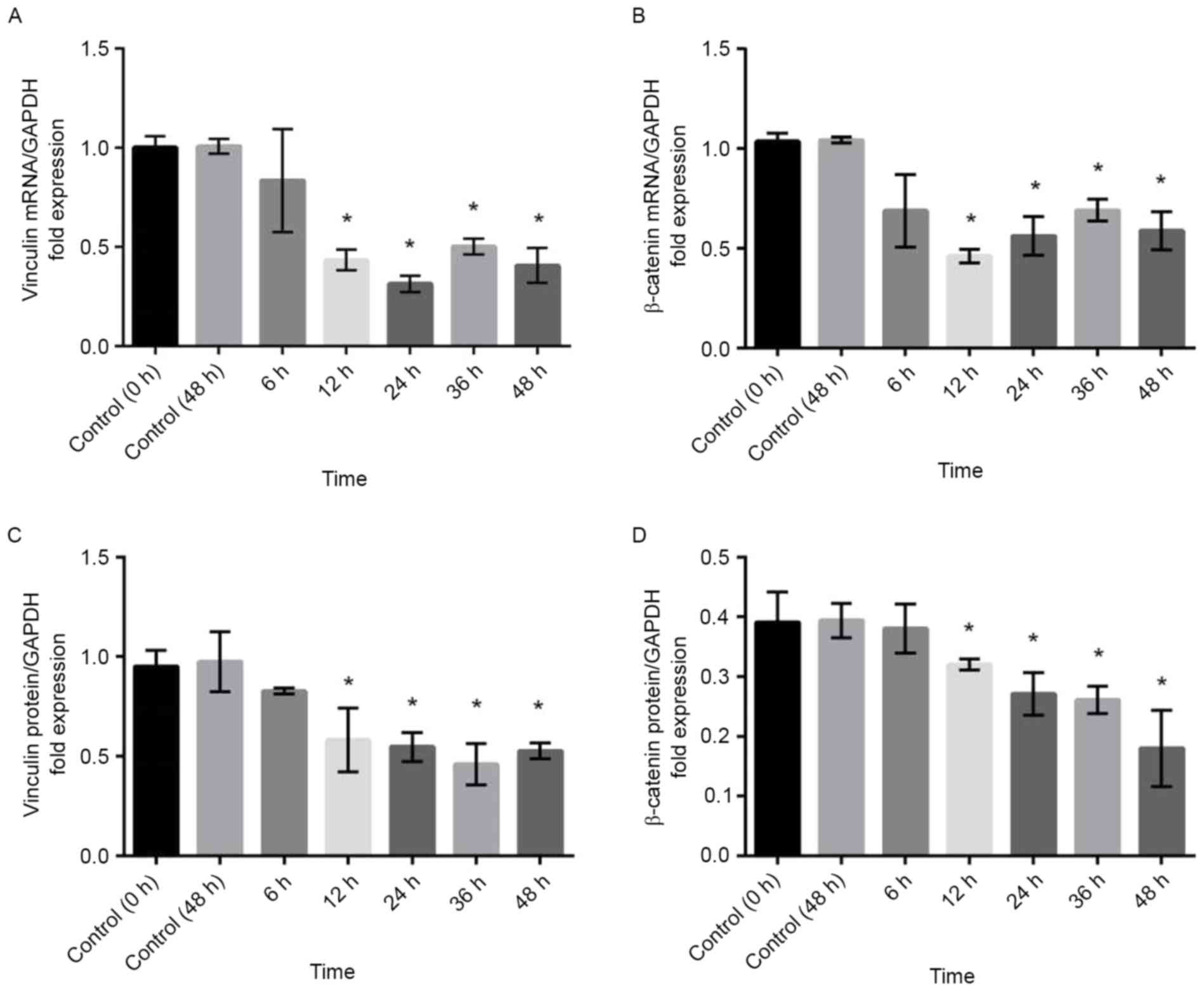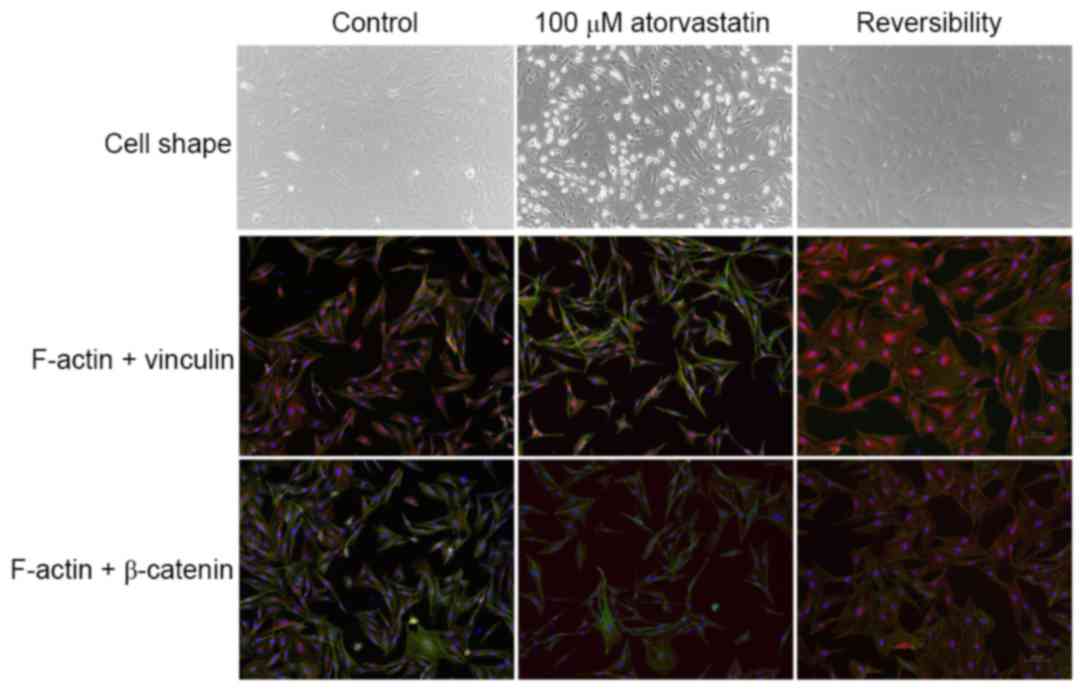|
1
|
Overby DR, Stamer WD and Johnson M: The
changing paradigm of outflow resistance generation: Towards
synergistic models of the JCT and inner wall endothelium. Exp Eye
Res. 88:656–670. 2009. View Article : Google Scholar : PubMed/NCBI
|
|
2
|
Fuchshofer R and Tamm ER: Modulation of
extracellular matrix turnover in the trabecular meshwork. Exp Eye
Res. 88:683–688. 2009. View Article : Google Scholar : PubMed/NCBI
|
|
3
|
Grant WM: Experimental aqueous perfusion
in enucleated human eyes. Arch Ophthalmol. 69:783–801. 1963.
View Article : Google Scholar : PubMed/NCBI
|
|
4
|
Picht G, Welge-Luessen U, Grehn F and
Lütjen-Drecoll E: Transforming growth factor beta 2 levels in the
aqueous humor in different types of glaucoma and the relation to
filtering bleb development. Graefes Arch Clin Exp Ophthalmol.
239:199–207. 2001. View Article : Google Scholar : PubMed/NCBI
|
|
5
|
Johnson M: What controls aqueous humour
outflow resistance? Exp Eye Res. 82:1–557. 2006. View Article : Google Scholar
|
|
6
|
Tamm ER and Fuchshofer R: What increases
outflow resistance in primary open-angle glaucoma? Surv Ophthalmol.
52(Suppl 2): S101–S104. 2007. View Article : Google Scholar : PubMed/NCBI
|
|
7
|
Ethier CR, Read AT and Chan DW: Effects of
latrunculin-B on outflow facility and trabecular meshwork structure
in human eyes. Invest Ophthalmol Vis Sci. 47:1991–1998. 2006.
View Article : Google Scholar : PubMed/NCBI
|
|
8
|
Bahler CK, Hann CR, Fautsch MP and Johnson
DH: Pharmacologic disruption of Schlemm's canal cells and outflow
facility in anterior segments of human eyes. Invest Ophthalmol Vis
Sci. 45:2246–2254. 2004. View Article : Google Scholar : PubMed/NCBI
|
|
9
|
Hu Y, Gabelt BT and Kaufman PL: Monkey
organ-cultured anterior segments: Technique and response to H-7.
Exp Eye Res. 82:1100–1108. 2006. View Article : Google Scholar : PubMed/NCBI
|
|
10
|
Tian B, Gabelt BT, Geiger B and Kaufman
PL: The role of the actomyosin system in regulating trabecular
fluid outflow. Exp Eye Res. 88:713–717. 2009. View Article : Google Scholar : PubMed/NCBI
|
|
11
|
Bornstein P: Matricellular proteins: An
overview. J Cell Commun Signal. 3:163–165. 2009. View Article : Google Scholar : PubMed/NCBI
|
|
12
|
Haddadin RI, Oh DJ, Kang MH, Filippopoulos
T, Gupta M, Hart L, Sage EH and Rhee DJ: SPARC-null mice exhibit
lower intraocular pressures. Invest Ophthalmol Vis Sci.
50:3771–3777. 2009. View Article : Google Scholar : PubMed/NCBI
|
|
13
|
Clark AF and Pang IH: Advances in glaucoma
therapeutics. Expert Opin Emerg Drugs. 7:141–163. 2002. View Article : Google Scholar : PubMed/NCBI
|
|
14
|
Cai S, Liu X, Glasser A, Volberg T, Filla
M, Geiger B, Polansky JR and Kaufman PL: Effect of latrunculin-A on
morphology and actin-associated adhesions of cultured human
trabecular meshwork cells. Mol Vis. 6:132–143. 2000.PubMed/NCBI
|
|
15
|
Rao PV, Deng PF, Kumar J and Epstein DL:
Modulation of aqueous humor outflow facility by the Rho
kinase-specific inhibitor Y-27632. Invest Ophthalmol Vis Sci.
42:1029–1037. 2001.PubMed/NCBI
|
|
16
|
Gabelt BT, Hu Y, Vittitow JL, Rasmussen
CR, Grosheva I, Bershadsky AD, Geiger B, Borrás T and Kaufman PL:
Caldesmon transgene expression disrupts focal adhesions in HTM
cells and increases outflow facility in organ-cultured human and
monkey anterior segments. Exp Eye Res. 82:935–944. 2006. View Article : Google Scholar : PubMed/NCBI
|
|
17
|
Downs JR, Clearfield M, Weis S, Whitney E,
Shapiro DR, Beere PA, Langendorfer A, Stein EA, Kruyer W and Gotto
AM Jr: Primary prevention of acute coronary events with lovastatin
in men and women with average cholesterol levels: Results of
AFCAPS/TexCAPS. Air force/texas coronary atherosclerosis prevention
study. JAMA. 279:1615–1622. 1998. View Article : Google Scholar : PubMed/NCBI
|
|
18
|
Endo A: The discovery and development of
HMG-CoA reductase inhibitors. J Lipid Res. 33:1569–1582.
1992.PubMed/NCBI
|
|
19
|
Vaughan CJ and Delanty N: Neuroprotective
properties of statins in cerebral ischemia and stroke. Stroke.
30:1969–1973. 1999. View Article : Google Scholar : PubMed/NCBI
|
|
20
|
Zacco A, Togo J, Spence K, Ellis A, Lloyd
D, Furlong S and Piser T: 3-hydroxy-3-methylglutaryl coenzyme A
reductase inhibitors protect cortical neurons from excitotoxicity.
J Neurosci. 23:11104–11111. 2003.PubMed/NCBI
|
|
21
|
Schmeer C, Kretz A and Isenmann S:
Statin-mediated protective effects in the central nervous system:
General mechanisms and putative role of stress proteins. Restor
Neurol Neurosci. 24:79–95. 2006.PubMed/NCBI
|
|
22
|
Yin H, Gui Y and Zheng XL:
2-methoxyestradiol inhibits atorvastatin-induced rounding of human
vascular smooth muscle cells. J Cell Physiol. 222:556–564.
2010.PubMed/NCBI
|
|
23
|
Song J, Deng PF, Stinnett SS, Epstein DL
and Rao PV: Effects of cholesterol-lowering statins on the aqueous
humor outflow pathway. Invest Ophthalmol Vis Sci. 46:2424–2432.
2005. View Article : Google Scholar : PubMed/NCBI
|
|
24
|
Burridge K and Wennerberg K: Rho and Rac
take center stage. Cell. 116:167–179. 2004. View Article : Google Scholar : PubMed/NCBI
|
|
25
|
Etienne-Manneville S and Hall A: Rho
GTPases in cell biology. Nature. 420:629–635. 2002. View Article : Google Scholar : PubMed/NCBI
|
|
26
|
Kaibuchi K, Kuroda S and Amano M:
Regulation of the cytoskeleton and cell adhesion by the Rho family
GTPases in mammalian cells. Annu Rev Biochem. 68:459–486. 1999.
View Article : Google Scholar : PubMed/NCBI
|
|
27
|
Somlyo AP and Somlyo AV: Signal
transduction through the RhoA/Rho-kinase pathway in smooth muscle.
J Muscle Res Cell Motil. 25:613–615. 2004.PubMed/NCBI
|
|
28
|
Wang J, Liu X and Zhong Y:
Rho/Rho-associated kinase pathway in glaucoma (Review). Int J
Oncol. 43:1357–1367. 2013. View Article : Google Scholar : PubMed/NCBI
|
|
29
|
Stein JD, Newman-Casey PA, Talwar N, Nan
B, Richards JE and Musch DC: The relationship between statin use
and open-angle glaucoma. Ophthalmology. 119:2074–2081. 2012.
View Article : Google Scholar : PubMed/NCBI
|
|
30
|
De Castro DK, Punjabi OS, Bostrom AG,
Stamper RL, Lietman TM, Ray K and Lin SC: Effect of statin drugs
and aspirin on progression in open-angle glaucoma suspects using
confocal scanning laser ophthalmoscopy. Clin Exp Ophthalmol.
35:506–513. 2007. View Article : Google Scholar : PubMed/NCBI
|
|
31
|
Openkova YY, Korobeiynikova EN, Rykin VS
and Vinkova GA: The analysis of status of biochemical indicators in
blood serum and lacrimal fluid in patients with primary open-angle
glaucoma. Klin Lab Diagn. 8–11. 2013.(In Russian). PubMed/NCBI
|
|
32
|
DiNicolantonio JJ, Lavie CJ, Serebruany VL
and O'Keefe JH: Statin wars: The heavyweight match-atorvastatin
versus rosuvastatin for the treatment of atherosclerosis, heart
failure, and chronic kidney disease. Postgrad Med. 125:7–16. 2013.
View Article : Google Scholar : PubMed/NCBI
|
|
33
|
Stoekenbroek RM, Boekholdt SM, Fayyad R,
Laskey R, Tikkanen MJ, Pedersen TR and Hovingh GK; Incremental
Decrease in End Points Through Aggressive Lipid Lowering Study
Group, : High-dose atorvastatin is superior to moderate-dose
simvastatin in preventing peripheral arterial disease. Heart.
101:356–362. 2015. View Article : Google Scholar : PubMed/NCBI
|
|
34
|
Sillesen H, Amarenco P, Hennerici MG,
Callahan A, Goldstein LB, Zivin J, Messig M and Welch KM: Stroke
Prevention by Aggressive Reduction in Cholesterol Levels
Investigators: Atorvastatin reduces the risk of cardiovascular
events in patients with carotid atherosclerosis: A secondary
analysis of the stroke prevention by aggressive reduction in
cholesterol levels (SPARCL) trial. Stroke. 39:3297–3302. 2008.
View Article : Google Scholar : PubMed/NCBI
|
|
35
|
Zhang Y, Toris CB, Liu Y, Ye W and Gong H:
Morphological and hydrodynamic correlates in monkey eyes with laser
induced glaucoma. Exp Eye Res. 89:748–756. 2009. View Article : Google Scholar : PubMed/NCBI
|
|
36
|
Polansky JR, Weinreb RN, Baxter JD and
Alvarado J: Human trabecular cells. I. Establishment in tissue
culture and growth characteristics. Invest Ophthalmol Vis Sci.
18:1043–1049. 1979.PubMed/NCBI
|
|
37
|
Livak KJ and Schmittgen TD: Analysis of
relative gene expression data using real-time quantitative PCR and
the 2(-Delta Delta C(T)) method. Methods. 25:402–408. 2001.
View Article : Google Scholar : PubMed/NCBI
|
|
38
|
Barany EH and Gassmann HB: The effect of
death on outflow resistance in normal and sympathectomized rabbit
eyes. Invest Ophthalmol. 4:206–210. 1965.PubMed/NCBI
|
|
39
|
Erickson-Lamy K, Schroeder AM, Bassett-Chu
S and Epstein DL: Absence of time-dependent facility increase
(“washout”) in the perfused enucleated human eye. Invest Ophthalmol
Vis Sci. 31:2384–2388. 1990.PubMed/NCBI
|
|
40
|
Vaajanen A, Vapaatalo H and Oksala O: A
modified in vitro method for aqueous humor outflow studies in
enucleated porcine eyes. J Ocul Pharmacol Ther. 23:124–131. 2007.
View Article : Google Scholar : PubMed/NCBI
|
|
41
|
Rao PV, Deng P, Sasaki Y and Epstein DL:
Regulation of myosin light chain phosphorylation in the trabecular
meshwork: Role in aqueous humour outflow facility. Exp Eye Res.
80:197–206. 2005. View Article : Google Scholar : PubMed/NCBI
|
|
42
|
Khurana RN, Deng PF, Epstein DL and Rao P
Vasantha: The role of protein kinase C in modulation of aqueous
humor outflow facility. Exp Eye Res. 76:39–47. 2003. View Article : Google Scholar : PubMed/NCBI
|
|
43
|
Epstein DL, Roberts BC and Skinner LL:
Nonsulfhydryl-reactive phenoxyacetic acids increase aqueous humor
outflow facility. Invest Ophthalmol Vis Sci. 38:1526–1534.
1997.PubMed/NCBI
|
|
44
|
Pokrovskaya O, Wallace D and O'Brien C:
The emerging role of statins in glaucoma pathological mechanisms
and therapeutics. Open J Ophthalmol. 4:124–138. 2014. View Article : Google Scholar
|



